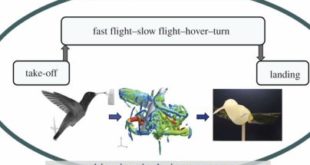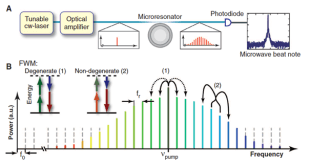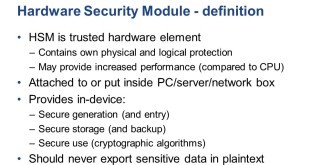Militaries are now employing Micro, Mini & Nano UAVs into their operations. They provide situational awareness to a small group of soldiers by flying several stories above them for 10-20 minutes at a time before placed back into a pocket to recharge. These will be used to carry out tasks …
Read More »Advances in AI Assistants enabling US army to develop cognitive agents helping Soldiers Deal with Information Overload
Virtual assistants are the cutting edge of end user interaction, thanks to endless set of capabilities across multiple services. Today, we can ask virtual assistants like Amazon Alexa, Apple’s Siri, Google Now to perform simple tasks like, “What’s the weather”, “Remind me to take pills in the morning”, etc. in …
Read More »Portable atomic clock technologies including chip-scale optical frequency synthesizer to enable ultra accurate GPS
Optical atomic clocks are at the pinnacle of time measuring devices, losing less than one second every ten billion years. Currently though, they are massive devices, weighing hundreds of kilograms. In order to have an optimal practical function that could be utilised by your average person, their size needs to …
Read More »Armies employing Micro and Nano UAVs for situational awareness, engaging light skinned vehicles, and enemy UAV’s
Unmanned aerial vehicle technology is advancing rapidly, and drones are getting smaller by the day. Militaries are now employing Micro, Mini & Nano UAVs into their operations. They provide situational awareness to a small group of soldiers by flying several stories above them for 10-20 minutes at a time before …
Read More »With Cyber becoming operational domain of warfare, Militaries establish Cyber commands and develop offensive cyberwarfare capabilites
Cyber warfare has developed into a more sophisticated type of combat between countries, where you can destroy communications and other digital infrastructure of adversaries. Cyberwarfare involves digital attacks on the networks, systems and data of another state, with the aim of creating significant disruption or destruction. That might involve destroying, altering …
Read More »Verification of Quantum computers is significant challenge on the road to scalable quantum computing technology.
Quantum chips perform computations using quantum bits, called “qubits,” that can represent the two states corresponding to classic binary bits — a 0 or 1 — or a “quantum superposition” of both states simultaneously. The unique superposition state can enable quantum computers to solve problems that are practically impossible for …
Read More »Plant Nanobionics or ePlants aim to turn plants into sensors detecting explosives, warn of pollutants and environmental conditions such as drought
Plant Nanobionics seeks to use designed nanoparticles to interface directly with plant cells and organelles to augment plant functions, as well as to introduce non-native functionalities. The broader vision is to create a wide array of wild-type plants, capable of imaging objects in their environment, self powering themselves as light …
Read More »Dedicated Hardware for Quantum Machine Learning to usher new era in AI by exponential speedup of applications
Quantum computing and quantum information processing is expected to have immense impact by performing tasks too hard for even the most powerful conventional supercomputer and have a host of specific applications, from code-breaking and cyber security to medical diagnostics, big data analysis and logistics. One of the areas where …
Read More »Industry developing security solutions like Hardware security module (HSM) for secure military unmanned platforms, sensors, and communication devices
Hardware Trojans (HT), which are malicious circuit inclusions into the design from an adversary with an intention to damage the functionality of the chip at a much later date or leaking confidential information like keys used in cryptography. Time to market demand has forced integrated circuit design, manufacturing and testing …
Read More »Embedded eSIM and iSIM are breakthrough IoT connectivity technologies for authenticating subscribers and devices on mobile networks
Strong IoT device authentication is required to ensure connected devices on the IoT can be trusted to be what they purport to be. Consequently, each IoT device needs a unique identity that can be authenticated when the device attempts to connect to a gateway or central server. With this unique …
Read More » International Defense Security & Technology Your trusted Source for News, Research and Analysis
International Defense Security & Technology Your trusted Source for News, Research and Analysis









